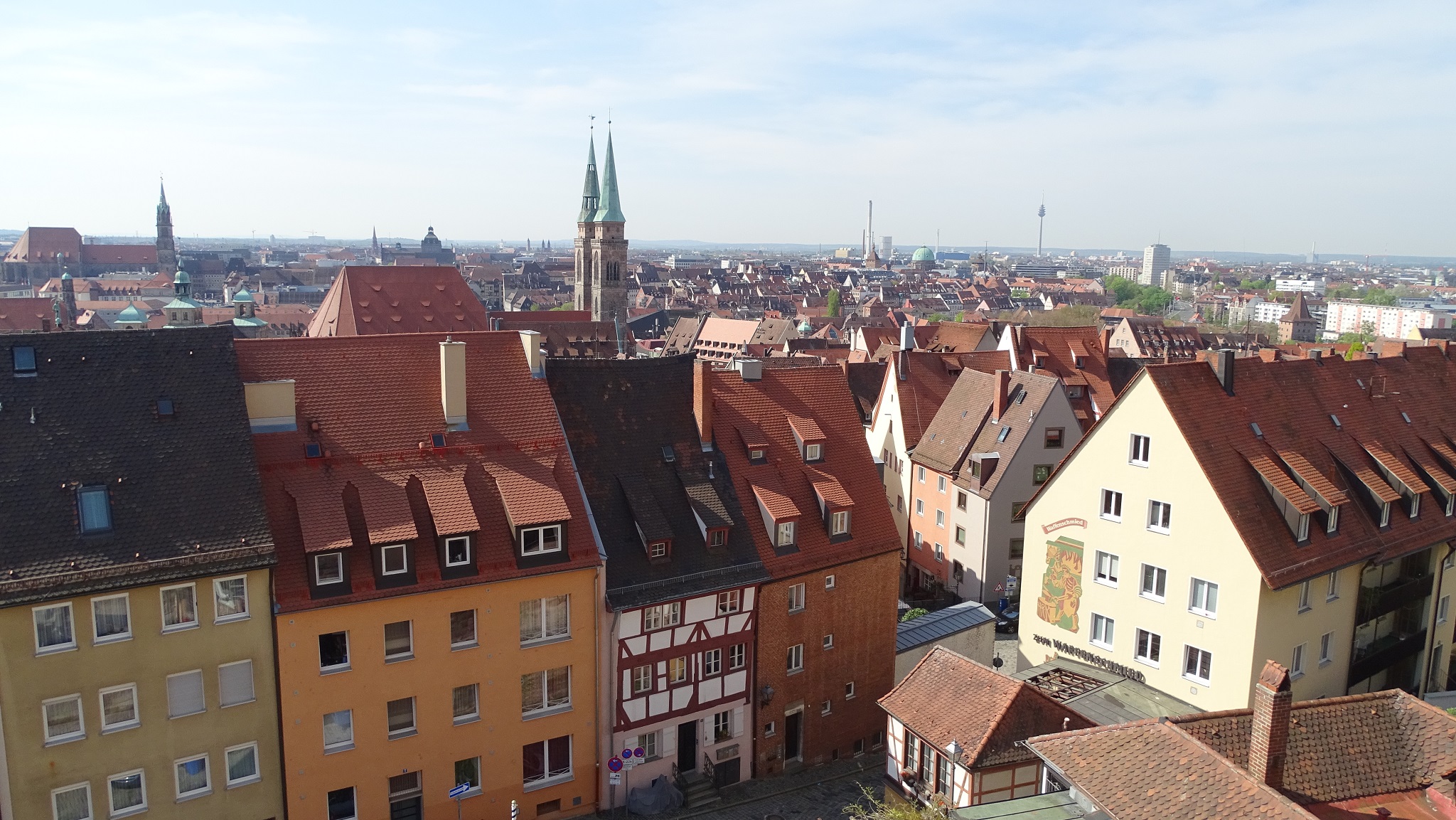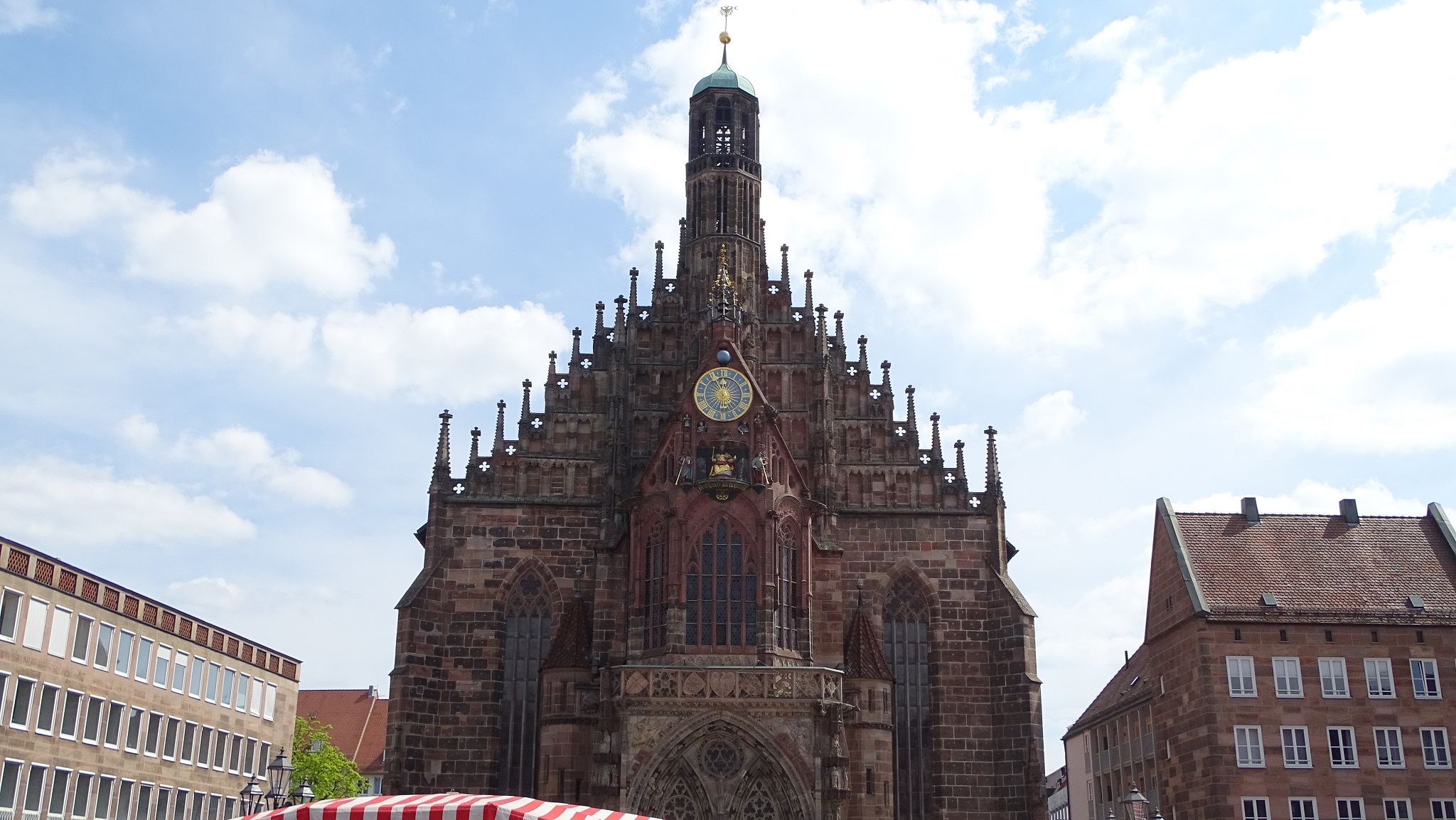[Worldtrippers home] [River Cruise home]

Today’s port, Nuremberg, is the second-largest city in Bavaria (and the 14th-largest in Germany). It was also the second-most bombed Germany city after Cologne. Following World War II, Nuremberg was painstakingly rebuilt using the original stones from each building. Builders opted to preserve a Medieval planning approach, so no building is taller than the cathedral.


Russell and Cameron joined the included excursion, “Nuremberg Through History.” Nuremberg’s Pegnitz River (a “sorry excuse for a river,” according to the locals) is not big enough to carry a cruise ship, so guests entered the city via motorcoach. The majority of the time was spent in Old Town, walking from the high Kaiserburg (Imperial Castle) down the hill to the Frauenkirche (Our Lady’s Church) in the market square.





Russell and Cameron also had some free time to explore the market square, where they experienced two of Nuremberg’s specialties: year-round Christmas stores and lebkuchen (a gingerbread-like Christmas cookie).



Nuremberg is unavoidably linked to the Nazi party and the Third Reich. Hitler chose the city as the base for his Nazi propaganda spectacles for three reasons:
The included excursion passed through several Nazi locations and landmarks, but guests did not stop or walkaround.
To better experience WWII history, Gail joined the “Nuremberg World War II Tour” optional excursion, which explored three locations in depth.
First was the Zeppelin Field. This is where the Nazi Party staged its annual propaganda rallies, which attracted more than one million attendees. Guests learned how every aspect of these rallies was carefully choreographed to associate the Third Reich with power, community and security. The Nazis were not particularly religious, but they used staging and symbols that would generate an almost religious fervor among attendees.



Second was the Conference Center. Hitler wanted to model the Third Reich after the empires of antiquity, and he envisioned a structure twice as large as the Roman Colosseum. The building was never completed because the resources were diverted to the war effort instead.


Third was the Palace of Justice, site of the post-war Nuremberg trials. The city was chosen because it had one of the only courthouses not destroyed by Allied bombing. In addition, it was fitting to stage the end of the Nazi party at the same location where it began.
The Nuremberg trials were significant in highlighting “crimes against humanity” for the first time. Previously, leaders were never held accountable for atrocities committed during a war. Nuremberg served as the template for today’s International Court in the Hague.


Gail found her excursion extremely moving and emotional. One of her fellow guests had an incredible story to share: his father had been one of the US military guards during the Nuremberg Trials. This guest was given permission to stand (behind the barriers) in the exact spot where his father had stood during the trials.
We were all back aboard the longship in time for a late lunch. Guests have an optional shuttle back into town for more shopping, but we’re going to stay aboard ship as we continue to sail through the Rhine-Main-Danube Canal system.
